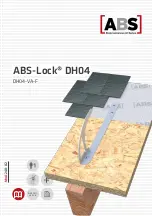
HPD-T and HPD-HV Hydraulic Sign Post Drivers
Greenlee / A Textron Company
5
4455 Boeing Dr. • Rockford, IL 61109-2988 USA • 815-397-7070
IMPORTANT SAFETY INFORMATION
Note: Keep decals clean and legible. Replace decals
when necessary.
When disposing of any components (hydraulic hoses,
hydraulic fluid, worn parts, etc.), do so in accordance
with federal, state, and local laws or ordinances.
Procedure for connecting or disconnecting
hydraulic hoses, fittings or components:
1.
Move the flow lever on the power source to
the OFF position.
2.
Stop the hydraulic power source.
3.
Follow the sequence under “Hose Connec-
tions” to prevent pressure buildup. In case
some pressure has built up, loosen hoses,
fittings or components slowly.
Emergency stop procedure:
1.
Release the trigger or move the control spool
to the OFF position.
2.
Shut off the hydraulic power source.
Vibration hazard:
Apply just enough pressure to do the work.
Applying excess pressure to the tool can cause
operator discomfort or temporary numbness.
Failure to observe this precaution may result in
injury.
These tools can weigh more than 25 kg (55 lb)
and require two persons to lift and transport.
Failure to observe this precaution may result in
injury.
Hydraulic oil can cause skin irritation.
• Handle the tool and hoses with care to prevent
skin contact with hydraulic oil.
• In case of accidental skin contact with hydraulic
oil, wash the affected area immediately to
remove the oil.
Failure to observe these precautions may result
in injury.
• Inspect the hydraulic hoses and couplings
every operating day. Repair or replace if
leakage, cracking, wear, or damage is evident.
Damaged hoses or couplings may fail, resulting
in injury or property damage.
• Use this tool for manufacturer’s intended
purpose only. Use other than that which is
described in this manual may result in injury or
property damage.
• Make sure all bystanders are clear of the work
area when handling, starting, and operating the
tool. Nearby personnel may be injured by flying
or falling debris or by flying parts in the event of
a tool malfunction.






































